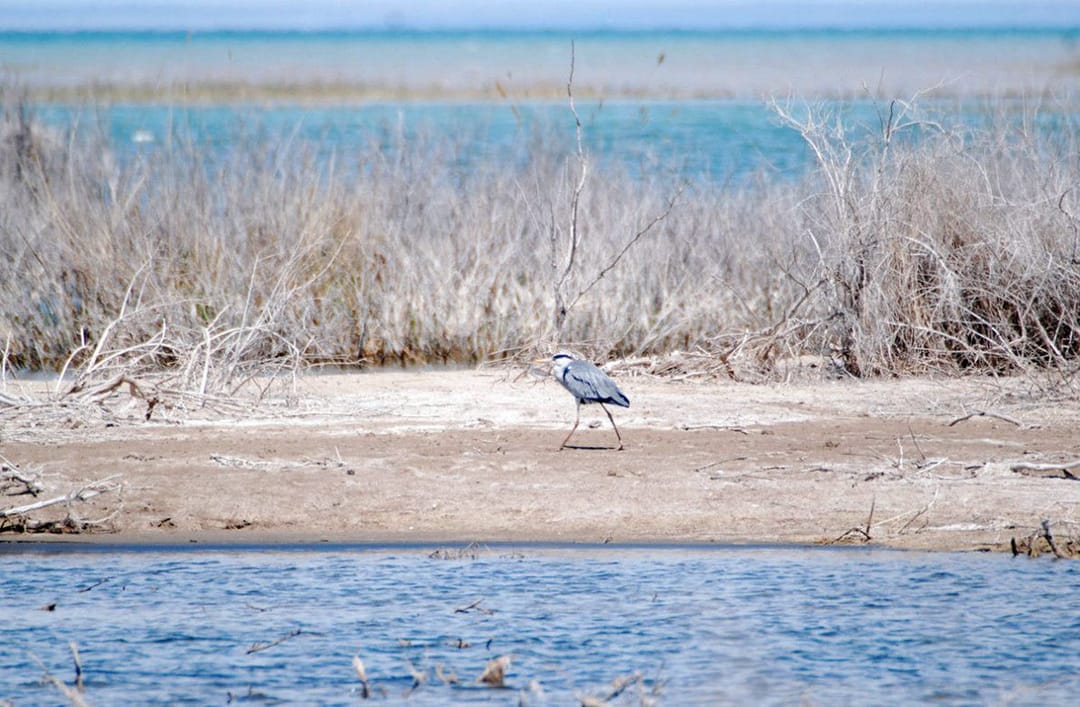A multi-day expedition to the Caspian Sea was made by researchers of the biodiversity laboratory of the Institute of Deserts, flora and fauna, according to the newspaper “Neutral Turkmenistan”.
The work was carried out on the topic “Monitoring of the vegetation of the Caspian deserts and its economic importance”.
On the basis of the research carried out, scientists will have to improve the scientific basis for the protection and rational use of the flora of the Caspian pastures.
On the instructions of the Environmental Protection Service, the state of plantations in the territory of the Avaza National Tourist Zone, as well as in the city of Turkmenbashi, was investigated. From here, the path ran deep into the Krasnovodsk peninsula, to the Turkmenbashi-Garabogaz alluvial lowland, which spreads in the form of a narrow strip from the bay of the same name to the port city, on the periphery it is in places a swampy and impassable saline surface.
On the saline soils widespread here, halophilic vegetation is found, represented mainly by sarsazanniks. There are also sandy soils nearby. Their vegetation cover consists of psammophytes, which are wormwood communities. Such pastures are used throughout the year; they become more diverse for grazed animals with the onset of the second half of spring and the appearance of annual herbaceous ephemerals.
To the north of the town of Karshi, as well as in the Dashkuduk region, there were small herds of feral horses. Currently, they belong to the State Association “Turkmen Atlary” and serve as genetic material for the maintenance of the Turkmen horse breeds. They periodically come to the watering hole at the Dashkuduk well with enough fresh water, despite the fact that there is a sea nearby.
From Dashkuduk, through the Oktumkum sands, the expedition advanced through the aeolian heaps, formed due to the rolling of sea sands and sandy-pebble formations. In these places, in the 60s of the last century, fresh groundwater was discovered at a depth of 20 meters. The salinity of water is only 2 g/l. For sands with a high thickness, condensation of atmospheric moisture is characteristic, freshwater lenses often accompany sandy deserts.
In Chilmammetkum in the north-west of the country there is a lake Yaskhan together with the village of the same name. And around there are dunes, where such a regularity is observed: in fixed places, santoliphyns dominate, and on semi-fixed ones, communities of sandy acacia - suzenniks, or Richter's hodgepodge - cherkezniks. There are two sandy acacias here - Conolly and Eichwald.
The vegetation of the plateau between Garabogazgol and Krasnovodsky bays, as well as kyrs and common gray-brown loamy soils, was also described. The underlying bedrock here contains gypsum. The highest points of the plateau are at 300 meters above sea level. The flat relief includes table-like elevations of calcareous outcrops, lowlands - true salt marshes with salt-resistant vegetation, as well as areas with sandy deposits. There are especially many of them on the eastern part of the plateau, where sand is carried by winds from the Chilmammetkum. The vegetation cover here is not very dense, occupies up to 40% of the space - all wormwood and hodgepodge.
Kemrud, Turan, Badkhyz, Santolin wormwood are widespread - here they form endless wormwood “seas” extending far beyond the horizon. And only roads in the form of straight or winding ribbons cross these wormwoods.
In this monotony, one can find hodgepodge - tree-like (boyalych), eastern (kevreik), Richter (cherkez), kidney-bearing (tetyr), halotamnus (chogon), barnyard (biyurgun). Their height does not exceed one meter. The short stature also extends to the black saxaul (ojar) - here its compact kyr form is found. These shrubs are rare among the numerous wormwoods.

